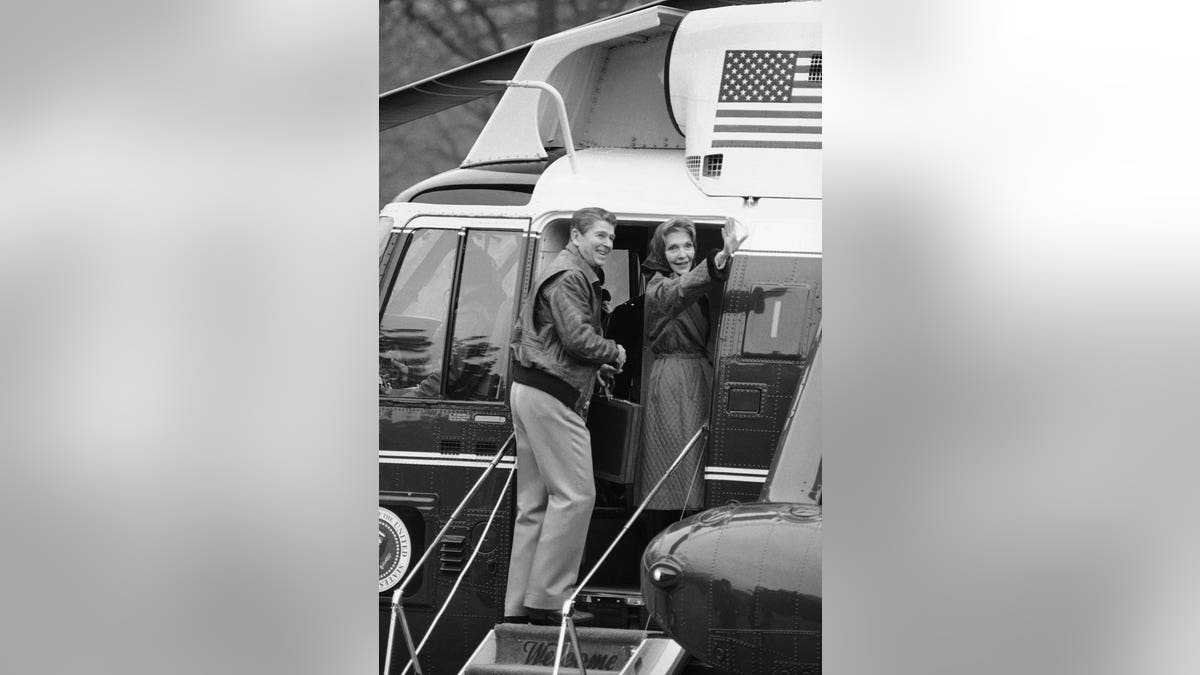
Cuban-Americans gave Ronald Reagan 90 percent of their vote. No other American ethnic group approached this level of devotion. Even “southern whites,” America’s most reliably Republican voting bloc, fell short of this “Hispanic” group’s support for The Gipper. A visit to Miami’s Cuban Memorial Cemetery might help explain the phenomenon.
You’ll often find people with itchy noses and red-rimmed eyes ambling amidst these long rows of white crosses. It’s a mini-Arlington cemetery of sorts, in honor of Castro and Che’s murder victims and those who—utterly without allies—fought and fell trying to free Cuba from these proxies for an Evil Empire. Twenty-five years later President Ronald Reagan would insure that any such fighters in Central America had an ally in the U.S. Worse still (in liberal eyes) he unashamedly defended the Nicaraguan Contras as “freedom-fighters.”
The tombs and crosses in the Cuban Memorial are mostly symbolic. Most of the bodies still lie in mass graves dug by bulldozers on the orders of a man Democratic presidential candidate George Mc Govern called, “very shy and sensitive, a man I regard as a friend.”
Never heard of this Cuban Memorial in the mainstream media? Well, it honors the tens of thousands of Fidel Castro’s and Che Guevara’s victims. Need I say more about the media blackout?…I didn’t think so.
Some of these Cuban Memorial visitors will be kneeling, others walking slowly, looking for a name. You remember a similar scene from the opening frames of “Saving Private Ryan.” Many clutch rosaries. Many of the ladies will be pressing their faces into the breast of a relative who drove them there, a relative who wraps his arms around her spastically heaving shoulders.
Try as he might not to cry himself, he usually finds that the sobs wracking his mother, grandmother or aunt are contagious. Yet he’s often too young to remember the young face of his martyred father, grandfather, uncle, cousin –or even aunt, mother grandmother– the name they just recognized on the white cross.
“Fusilado” (firing squad execution) it says below the name– one word, but for most visitors one loaded with traumatizing flashbacks.
On Christmas Eve 1961, Juana Diaz spat in the face of the Castroite executioners who were binding and gagging her. They’d found her guilty of feeding and hiding “bandits.” (Che’s term for Cuban peasants who took up arms to fight his theft of their land to create Stalinist kolkhozes.) Farm collectivization was no more voluntary in Cuba than in the Ukraine. And Cuba’s Kulaks had guns—at first anyway. Then the Kennedy-Khrushchev pact left them defenseless against Soviet tanks, helicopters and flame-throwers. When the blast from Castro’s firing squad demolished Juana Diaz’ face and torso, she was six months pregnant.
In Aug. 7, 1961, Lydia Perez was eight months pregnant and a political prisoner of the man Andrea Mitchell describes as, “old-fashioned, courtly–even paternal, a thoroughly fascinating figure!” Lydia somehow annoyed a guard who bashed her to the ground, kicked her in the stomach, and walked off. Both Lydia and her baby were left to bleed to death.
Rigoberto Hernandez was 17 when Che Guevara’s soldiers dragged him from his jail cell, jerked his head back to gag him and started dragging him to the stake. Little “Rigo” pleaded his innocence to the very bloody end. But his pleas were garbled and difficult to understand. His struggles while being gagged and bound to the stake were also awkward. The boy had been a janitor in a Havana high school and was mentally retarded. His single mother had pleaded his case with hysterical sobs. She had begged, beseeched and finally proven to his “prosecutors” that it was a case of mistaken identity. Her only son, a boy in such a condition, couldn’t possibly have been “a CIA agent planting bombs.”
“Fuego!” and the firing squad volley riddled Rigo’s little bent body as he moaned and struggled awkwardly against his bounds, blindfold and gag. “Judicial evidence is an archaic bourgeois detail!” sneered Che Guevara.
Carlos Machado was 15 years old in 1963 when the bullets from the firing squad shattered his body. His twin brother and father collapsed beside Carlos from the same volley. All had resisted Castro and Che’s theft of their humble family farm.
According to the scholars and researchers at the Cuba Archive, the Castro regime’s total death toll—from torture, prison beatings, firing squads, machine gunning of escapees, drownings, etc.—approaches 100,000. Cuba’s population in 1960 was 6.4 million. According to the human rights group Freedom House, 500,000 Cubans (young and old, male and female) have passed through Castro’s prison and forced-labor camps. This puts Castro and Che’s political incarceration rate right up there with their hero Stalin’s.
Resulting omelet?
The Castro brothers and Che Guevara converted a nation with a higher per capita income than half the nations of Europe, the lowest inflation rate in the Western hemisphere, a larger middle class than Switzerland, a huge influx of immigrants and the 13th lowest infant-mortality in the world, into one that repels Haitians.
Having lived it, to Americans of Cuban heritage Communism means—not free healthcare, not universal education, not overzealous social workers and community organizers—but pure Evil.
Ronald Reagan understood.
Had Ronald Reagan been U.S. President in 1960, no Cuban Memorial would be needed in south Florida today. And some obscure and long-dead Latin criminals named Fidel Castro and Che Guevara would merit less textbook space than Pancho Villa.
Humberto Fontova is the author of four books, including Fidel: Hollywood’s Favorite Tyrant and Exposing the Real Che Guevara.
This essay was first published in The Americano.




